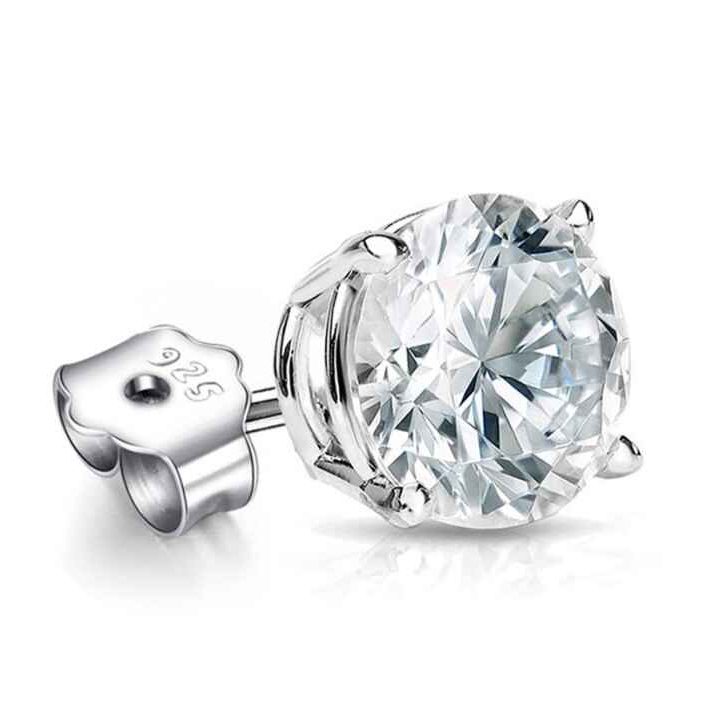here are some tips & tricks to identify natural diamonds
additional tests to identify natural diamonds at home
Table of Contents
The Tilt Test
When a proportional brilliant cut stone is illuminated & viewed against a dark background, with its table facet at 90°to the line of vision, the stone will appear uniformly bright.
Now as the observer tilts the stone away from him (line of vision)
a) If the stone remains bright without losing its overall brilliant appearance, it could be a diamond.
b) If the pavilion facet looks darker, it could be a stimulant.
The Dot-ring Test
This is more suited for unmounted stone. The first observer has to make a black dot on white paper. Now stone under test should be placed table facet down on the paper and centered over the dot. If this dot appears as a ring around the culet of the stone, the stone could be a stimulant.
The Transmission Test
The stone under test should be placed table facet down on any strongly colored paper or surface. If the color does not show through the rear of the stone it could be a diamond.
LIMITATIONS
Limitations for these additional tests are as follows:
a) These three tests are only for well-proportional round brilliant cut stones. If the stone under test is a shallow cut Diamond then these tests are not useful. If the stone is simulant and its pavilion is deeper than Diamond’s ideal proportion, then again one does not separate the diamond from its simulants.
b)If the Refractive index of the stone (simulant) is equal to a diamond or more than a diamond then again these tests are not reliable.

Weight-Girdle Diameter Test
An unmounted stone can be identified by checking its weight against its girdle diameter. This identifies the stone by estimating its S.G.
hardness test
If there is no alternative, one can perform this test. One can draw the girdle of the stone under the test across a polished corundum plate. If the plate is scratched then the stone is a diamond.
But the latest simulant synthetic moissanite will also scratch the plate but its other properties are different.
The Moissanite Tester
As we all know, diamonds can be separated from all their simulants by using a thermal conductivity tester. But its latest simulant called Moissanite cannot be separated by thermal conductivity, because its thermal conductivity is similar to diamond.
So to distinguish between diamond & moissanite the C3 / moissanite tester is used.
The C3 tester determines relative transparency in the near ultraviolet, where diamond transmits and synthetic moissanite absorbs. The user must know that this new instrument is to be used only in conjunction with a standard thermal conductivity tester. Any unknown nearly colorless gemstone should be tested first with a thermal conductivity meter. And only those samples that the thermal tester indicates the diamond would need to be tested with this C3 meter, which would then identify whether any were synthetic moissanite.
The use of this instrument is very simple. The operator brings the polished facet of stone (loose or mounted) in contact with a fiber optic probe that is located on the side of the instrument. As soon as the sample touches the probe, the instrument emits a sound & an indicator light illuminates, if there is no sound or response from the indicator light, it means the stone is synthetic moissanite.
Identifying natural diamonds typically involves a combination of visual inspection, specialized tools, and sometimes expert analysis. Here are several methods used to identify natural diamonds:
- Visual Inspection:
- Brilliance and Fire: Natural diamonds are known for their exceptional brilliance and fire, which refers to their ability to reflect light and produce colorful flashes. Observing these optical properties can help distinguish diamonds from other materials.
- Inclusions: Diamonds often have unique internal features called inclusions. Some inclusions are crystals, minerals, or other substances trapped inside the diamond during its formation. These inclusions are visible under magnification and can be characteristic of natural diamonds.
- Shape and Cut: Diamonds are typically cut into various shapes like round, princess, emerald, etc. Familiarity with common diamond shapes can aid in identification.
- Hardness Test:
- Diamonds are the hardest natural material and can scratch glass and most other materials. Performing a scratch test (where a diamond scratches a surface) can help identify a genuine diamond.
- Thermal Conductivity Test:
- Diamonds are excellent conductors of heat. A thermal conductivity tester can quickly assess whether a stone is a diamond based on its ability to conduct heat.
- UV Light Test:
- Some diamonds fluoresce (emit light) under ultraviolet (UV) light. However, not all diamonds exhibit this property, so it’s not a definitive test.
- Density Test:
- Diamonds have a specific gravity of approximately 3.5 g/cm³. A density test can help distinguish diamonds from most simulants and imitations.
- Professional Gemological Testing:
- For a definitive identification, it’s best to consult a certified gemologist or take the stone to a reputable gemological laboratory. Gemologists use specialized equipment and techniques, including microscopes and spectroscopes, to analyze the properties of the stone accurately.
- Certificate of Authenticity:
- If you’re buying a diamond, always ask for a certificate of authenticity from a recognized gemological authority such as the Gemological Institute of America (GIA) or the International Gemological Institute (IGI). These certificates provide detailed information about the diamond’s characteristics, including its authenticity and quality.
Remember that some synthetic diamonds, such as those created through high-pressure, high-temperature (HPHT) or chemical vapor deposition (CVD) methods, can have properties similar to natural diamonds. Therefore, it’s essential to rely on a combination of methods and, if necessary, professional expertise to accurately identify diamonds.
here is some more information about identifying natural diamonds, please read the article written by Diamonds Pro
buy diamonds direct from manufacturers at wholesale price, please visit our store.



